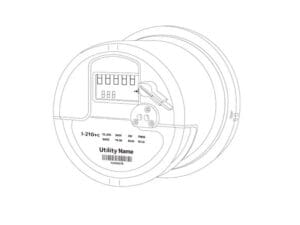
A blueprint for the ‘Common European Energy Data Space’ (CEEDS) marks the next step in the realisation of what is set to be foundational for the large-scale digitalisation of Europe’s energy system.
The blueprint, which has been prepared by the Interoperability Network for the Energy Transition (int:net), is aimed to guide on transitioning the existing energy sector data infrastructures towards data space solutions and to define a general data space architecture that can enable an initial set of real-world business use cases.
In particular, the architecture is aimed at interconnecting the existing data infrastructures with federated data spaces, in which multiple datasets are mapped.
The concept of data spaces has been gathering momentum in various domains for sharing of data between multiple participants and the establishment of a common energy data space is one of the key actions set out in the EU’s energy sector digitalisation action plan.
Have you read?
First version of the European energy data space is up for funding
Creating data space with smart meter hubs
Foundational aspects that must be considered pertain to security and privacy, data quality and integrity and governance, while other aspects that need to be taken into account include the business model related to data exchange, legal and operational details and the technology, with a primary objective to ensure interoperability both internally and with other data spaces.
The blueprint document states that at the highest level, the CEEDS is foreseen as the common framework that federates different data spaces implemented at national, sub-national or international levels and allows the participation of single users.
Business use cases
The five representative business use cases, in which specific exchanges of data from diverse sources must occur among the involved actors, were defined as:
- Use case #1 – Collective self-consumption and optimised sharing for energy communities
- Use case #2 – Residential home energy management integrating distributed energy resources (DER) flexibility aggregation
- Use case #3 – TSO-DSO coordination for flexibility
- Use case #4 – Electromobility: services roaming, load forecasting and schedule planning
- Use case #5 – Renewables O&M optimisation and grid integration.
Based on these the proposed model corresponds to the creation of the energy data space as the combination of multiple ‘distributed data ecosystems’, i.e. the existing legacy data platforms, with an overarching layer defined as the ‘federated data space’ where the data is indexed and made discoverable and providing a ‘marketplace’ for sharing and possibly trading of data and data services.

Data space connector
The different data space participants are connected through a software component known as the ‘data space connector’, which realises the interconnection and data exchange.
This data space connector should be incorporated into the pre-existing platforms to enable identification, data harmonisation and brokerage towards data spaces, which can be useful for integrating data from different sources or for allowing multiple applications to access the same data without having to duplicate it in multiple places.
Moreover, in this model, the data space connector also enables the exchange of energy data and execution of services both among the existing legacy platforms and through the federated layer.
The document notes that to fully achieve the deployment of the CEEDS, starting from the federation of projects’ data space instances, detailed interoperability measures are necessary including technical interoperability, semantic interoperability and governance interoperability.
The document states that the presented blueprint underscores the critical need to adopt data space solutions within the energy domain, marking a pivotal moment for the transformation of the industry.
“The fundamental pillars of data spaces not only foster the active engagement of key stakeholders across the energy value chain but also promise mutual benefits, ranging from monetary compensations to an elevated quality of services.
“At this scope, the establishment of clear rules, policies and regulatory adaptations is a linchpin in facilitating fair data exchange, paving the way for an open market that fosters the participation of new actors, including data and service providers, as well as data consumers.”
The int:net initiative managed by the Fraunhofer FIT is an EU Horizon Europe-supported project to bring together stakeholders from across the European energy sector to jointly work on developing, testing and deploying interoperable energy services.
Key parties are the projects in the ‘energy data spaces cluster’, i.e. Omega-X, EDDIE, Enershare, Synergies and DATA CELLAR, whose findings have fed into the blueprint, while further inputs should come from the newly launched HEDGE-IoT, ODEON and TwinEU projects.
In the meantime, the blueprint will continue to be updated with version 2 due to be released in June 2024.








